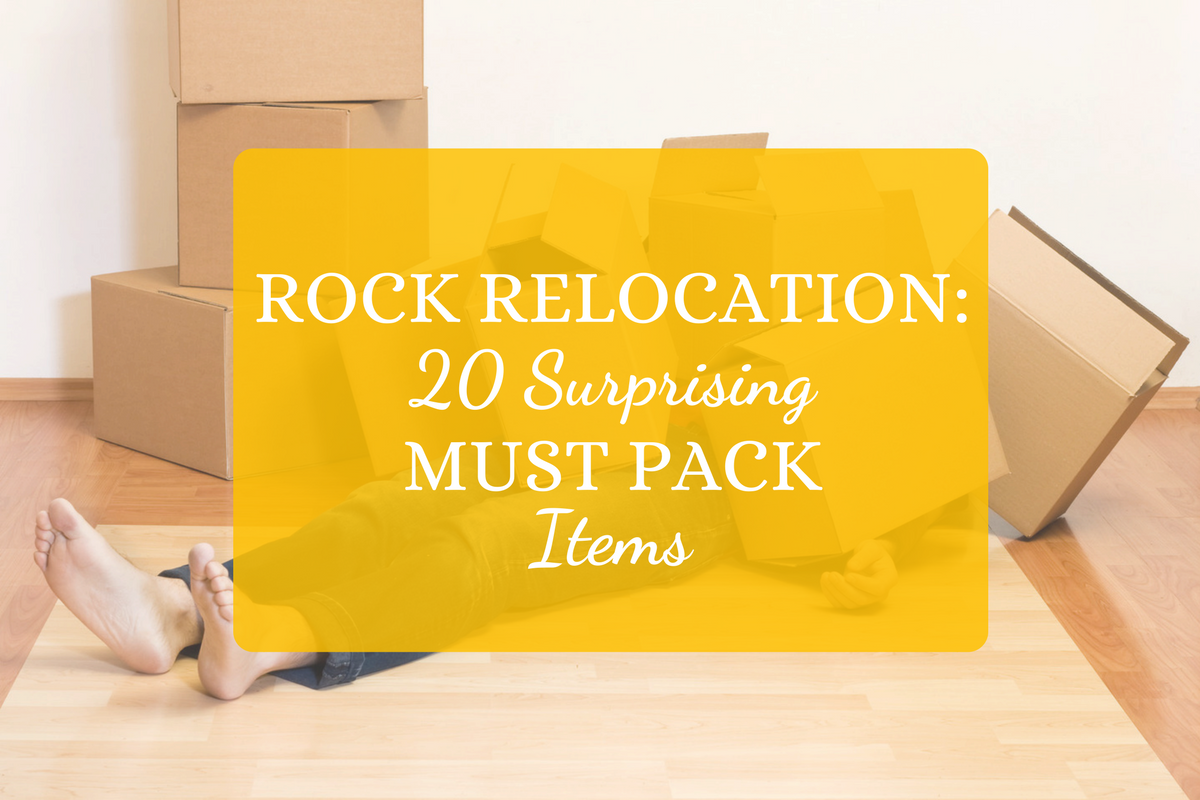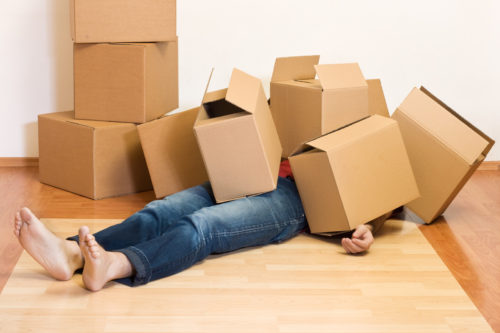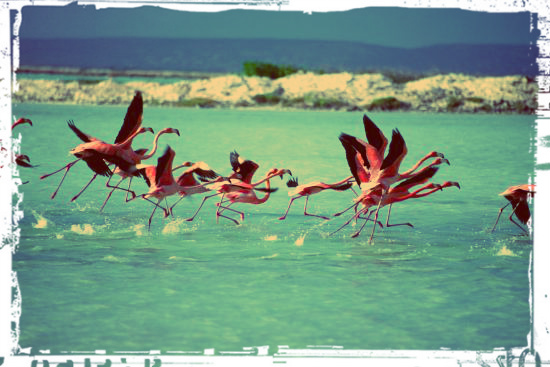In planning to move to an island, it can be tricky to decide what to pack and what to leave behind. When we retired to Nevis, we moved what we thought we’d need to set-up our new home. Upon arrival, we were consistently surprised by how much all the practical items we packed came in handy – and how many other random things we really wished we would have brought with us.
What you need will depend on how developed your new rock home is. You may have more of these things available for purchase on your island than on some others, though regardless, I think it’s safe to say that even if you can find the item you seek, it will certainly be more expensive than it is back home.
This may sound like a packing list for a camping trip, and in a lot of ways, island life can be a bit like roughing it in the Great Outdoors. “Self reliance” might be your new mantra. “Be prepared” also works, even if you weren’t a Boy Scout.
For those of you preparing for a move to an island,
here is my list of
20 Practical Items I’d Recommend Packing:
1. Old-fashioned metal coffee percolator
The island electricity goes off, frequently and suddenly. When it does go off, if you’re living without an automatic generator, you need to be prepared to cope. For starters, we have a gas stove. It’s comforting to know that we can cook and boil water, even during a serious disruption. Beyond that, everything is better when we’ve had our coffee, so we have an old-fashioned percolator. We can easily make coffee on our gas stove, or even on our barbecue.
2. Hand-powered kitchen appliances
Even though we use lots of electrical appliances, we also ensure we have hand-powered equipment, at least as a backup. It would be pretty silly not to be able to open a can of food during a hurricane for lack of a basic can opener.
3. Rechargeable LED lights
These are great. We keep them charged and in a place where we can find them in the pitch dark. We also brought a lot of candles, but they’re pretty useless – candles + island breezes do not mix.
4. Battery powered clocks/timers
Even when the power is on, it varies in frequency. You won’t notice though until your electric clock timers turn out to be totally inaccurate. After a while, they don’t even show the right day. This may be one of the reasons behind “island time”. You need battery powered ones to keep actual time (if that matters to you).
5. Track lighting
Consider extra lighting. High ceilings are wonderful for keeping cool, and therefore very common. However, if your fixtures are installed 20 feet above your head, the light will seem very dim. Similarly, verandas keep the house cool, and they do it by keeping out the sun – but that also means they keep out the light. Someone warned us about this, so we brought track lights and had them installed at about 7 feet high. Otherwise, we’d be barbecuing or going out to eat all the time, because the nice cool kitchen is too dark to cook in, even at midday.
6. Extra batteries and a battery tester
Lots of battery operated gadgets work until they don’t – and that’s ok and to be expected. BUT lots just work badly when the voltage declines. For example, my camera frequently tells me to change the batteries, even when they are pretty new, but it works again if I open the battery chamber and rub the batteries several times. I threw away a lot of batteries before I learned this little tidbit.
So now, I measure the voltage and refresh the contacts for any issue involving battery power. I don’t just throw away the battery. Rubbing alcohol is also great for removing corrosion (happens fast on an island) in battery chambers. Dab a little on a Q-Tip, and rub the connectors, even if you can’t see the corrosion. It’s sneaky. The alcohol won’t hurt, and it may help. Some gadgets are much more touchy about proper voltage than others.
The battery says on it what the voltage should be, often 1.5 volts. If it reads much less than that when you test it, the battery is likely the issue. If it reads 1.5 or more, there is a different issue, which won’t be solved by new batteries. And to make it even weirder, some gadgets work when the voltage is 1.35, and others choke at 1.48.
7. A car battery charger
And know how to use it. Charging a car battery is easy, and far cheaper than having it done for you.
8. Jumper cables
Again – know how to use them and always carry them in your car. It is easy to get a dead car battery and easy to find people who will help – but it’s not so easy to find someone who actually has the cables. YouTube has lots of videos on how to use them. Practice with someone knowledgeable ahead of time. My mnemonic is DEAD-RED/RED-LIVE/LIVE-BLACK/BLACK-DEAD.
9. Large, heavy duty tool boxes
The really big kind, as large as a trunk. In fact, use them as shipping containers to get the rest of your stuff to the island. They will come in handy for storage later.
10. Bullfrog Vapor Corrosion Inhibitor Cups
I’m not one to recommend fancy goop, and when someone told me about it originally, I said, “Oh, come on.” Not exactly what I thought, but I was being polite. Then he gave me a cup of it, and I used it in my heavy duty tool box. I figured it couldn’t hurt to experiment. I had a bunch of brand new brushes with shiny metal handles, and I put some in the toolbox, and left others in a drawer (not even in the open air). Now I have far fewer shiny ones – only those I put in with the Bullfrog Cup. The ones in the drawer were totally rusted in a few months. I won’t suggest that the goop solves all rust and corrosion issues, but now I keep all my tools in the tool box with it, and it does seem to help.
11. Ladders. Good ladders. Many types of ladders.
It is much easier to find someone who can and will use an available ladder than it is to find someone who actually has a ladder and a truck to transport it. Most of the island houses I’ve seen have very high ceilings. You can’t even get a light bulb changed without a ladder, much less clean the crud off the fans or remove the pervasive spider webs.
12. Tools
Bring tools, many tools. Ask your friends for tools – even used tools – as going away gifts. Better yet, get your knowledgeable friends to show you how to use the tools. A socket set with LOTS of different sizes including Imperial and metric really comes in handy.
13. A rechargeable power drill with lots of bits
Make sure you have all the usual bits and especially the kind that will drill into tile and concrete (usually called masonry on the label). All bits are NOT created equal.
14. A Dremel tool
Surprisingly useful, again with lots of bits. Among other things, it cuts off screws that have stripped heads. And there are lots of them in our island house, stripped before we got here.
15. A handheld electric saw
I didn’t bring a hand held electric saw because the one we had died just before we came, but I needed one so badly I brought one back in a suitcase. I don’t even carpenter very much, but when you need a saw, you need a saw. Among other things, you can saw up packing crates and pallets to stack all your ladders.
16. A power washer
I don’t have a power washer, but I would consider it if I was just moving this time around. Little grey things attach themselves everywhere – less than an inch long. I don’t know if they are critters or plants or what. If you don’t want them, you have to pick them off individually. The power washer MIGHT do the trick, but then it might power off the stucco, too…
17. An old cookbook
The kind that starts with the actual food item that comes from the butcher or the garden is what you want. The ones that want you to start with a package of something are not going to be much help here.
18. A sewing machine
As well as a little dress for it, too (I’m told they last longer if you keep them covered). You should also bring lots of needles that fit it (they rust), oil for it, and the instruction manual. It’s a good idea to bring lots of thread and bobbins as well. Since you can’t go to a big box store any old time, you may find that you need to fix things or want to make things. I brought several patterns, and I use them over and over as a basis for what I want to make. I even brought fabric, lots of cotton fabric. Leave behind all the polyester stuff – it just creates sweat.
19. Six months worth of your prescription meds
Your rock may or may not have all the remedies you might want, and even if it does, they might have different names and it might take you awhile to find them. And if a medication needs a prescription in the USA, it will need a prescription even to buy it on CanadaDrugs.com. So on this island, I can’t buy the wonderful Robaxycet (combination muscle relaxant and pain killer) even though in Canada, it is an over-the-counter remedy. Again, frustrating. Just consider bringing a six month supply of things you commonly use. That should give you time to adjust to the new place and find new sources. Not to mention, the items are probably less expensive back at home.
20. Heavy duty sealable containers for food.
Keeping pasta in a plastic bag is a joke, as I learned when I opened the bag and the spaghetti was hollow because it had been eaten from the inside out. I’ve also seen holes bored into bags by critters, though I haven’t actually seen the critters that do the boring. Don’t want to. I bring pasta and flour and similar items home from the store, and put them in the freezer for two weeks to kill whatever critter is there to begin with, and then store the food in the really good containers.
– – –
What else would you add to the list? When you first moved to your rock, what did you wish you would have packed that you didn’t?
Or, is there anything you did bring that ended up proving useless? Books, for instance – they mildewed too fast here for me…



















20 Comments